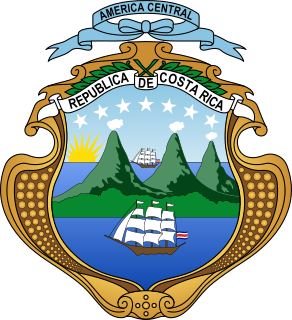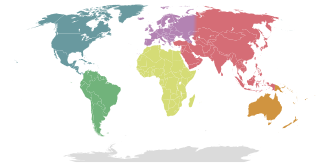| Boyaca Department Departamento del Boyaca | |
|---|---|
 | |
| Coordinates: 5°32′N7°22′W / 5.533°N 7.367°W | |
| Created | 1824 |
| Dissolved | 1830 |
| capital | Tunja |
| Population | |
| • Total | 444,000 |
Boyacá Department was one of the departments of Gran Colombia.
| Boyaca Department Departamento del Boyaca | |
|---|---|
 | |
| Coordinates: 5°32′N7°22′W / 5.533°N 7.367°W | |
| Created | 1824 |
| Dissolved | 1830 |
| capital | Tunja |
| Population | |
| • Total | 444,000 |
Boyacá Department was one of the departments of Gran Colombia.
It had borders to
4 provinces and 29 cantons:

Santander is a department of Colombia. Santander inherited the name of one of the nine original states of the United States of Colombia. It is located in the central northern part of the country, borders the east with the Magdalena River, borders to the south and southeast with Boyacá, to the northeast with Norte de Santander Department, to the north with Cesar Department, and to the west with Bolivar and Antioquia Departments. Its capital is the city of Bucaramanga.

Colombia is a unitary republic made up of thirty-two departments and a Capital District. Each department has a Governor (gobernador) and a Department Assembly, elected by popular vote for a four-year period. The governor cannot be re-elected in consecutive periods. Departments are country subdivisions and are granted a certain degree of autonomy.

Guárico State is one of the 23 states of Venezuela. The state capital is San Juan de Los Morros. Guárico State covers a total surface area of 64,986 km2 (25,091 sq mi) and, in 2011, had a census population of 747,739. It is named for the Guárico River.

The period between 1810 and 1816 in the Viceroyalty of New Granada was marked by such intense conflicts over the nature of the new government or governments that it became known as la Patria Boba. Constant fighting between federalists and centralists gave rise to a prolonged period of instability. Similar developments can be seen at the same time in the United Provinces of the Río de la Plata. Each province, and even some cities, set up its own autonomous junta, which declared themselves sovereign from each other.

Boyacá is a town and municipality in the Márquez Province, part of the department of Boyacá, Colombia. It is located approximately 15 kilometres (9.3 mi) from the city of Tunja, the capital of the department. Boyacá limits Tunja and Soracá in the north, Jenesano in the south, Nuevo Colón and Ramiriquí in the west and Ventaquemada in the east.

Pamplona is a municipality and city in Norte de Santander, Colombia.

Manuel de Bernardo Álvarez del Casal was an influential Criollo figure in New Granada at the time of the independence movement. He occupied several important positions in the rebel government. He was also the uncle of Antonio Nariño, forerunner of independence. He served as president of the rebel State of Cundinamarca in 1814.

The United Provinces of New Granada was a country in South America from 1811 to 1816, a period known in Colombian history as the Patria Boba. It was formed from areas of the New Kingdom of Granada, roughly corresponding to the territory of modern-day Colombia. The government was a federation with a parliamentary system, consisting of a weak executive and strong congress. The country was reconquered by Spain in 1816.

Costa Rica is administratively divided into seven provinces which are subdivided into 82 cantons, and these are further subdivided into districts. Cantons are the only administrative division in Costa Rica that possess local government in the form of municipalities. Each municipality has its own mayor and several representatives, all of them chosen via municipal elections every four years.

Oicatá is a town and municipality in the Central Boyacá Province, part of the Department of Boyacá, Colombia. The urban centre is situated on the Altiplano Cundiboyacense at an altitude of 2,815 metres (9,236 ft) and a distance of 153 kilometres (95 mi) from the national capital Bogotá and 15 kilometres (9.3 mi) from the department capital Tunja. It borders Cómbita and Tuta in the north, Chivatá and Tunja in the south, Chivatá in the east and in the west Cómbita and Tunja.

The National Administrative Department of Statistics (DANE) does not collect religious statistics, and accurate reports are difficult to obtain. However, based on various studies and a survey, about 90% of the population adheres to Christianity, the majority of which (70.9%) are Roman Catholic, while a significant minority (16.7%) adhere to Protestantism.

North Santander is a department of the nation of Colombia. It is in the north of the country, bordering Venezuela. Its capital is Cúcuta, one of the country's major cities.

The Roman Catholic Diocese of Socorro y San Gil is a diocese located in the cities of Socorro and San Gil in the Ecclesiastical province of Bucaramanga in Colombia.
The Republic of Gran Colombia was a former independent country in northern South America, a post-Spanish colonial country that existed from 1819 to 1831. Its initial subdivisions, created in 1820, were revised and expanded in 1824.

Santander State was one of the states of Colombia. Today the area of the former state makes up most of modern day areas of the Santander Department and Norte de Santander Department in northeastern Colombia.

States of Colombia existed from February 27, 1855, in the Republic of New Granada and the Granadine Confederation, where they were called "federal states". In the United States of Colombia they were called "sovereign states".

Ortún Velázquez de Velasco was a Spanish conquistador. He is known as the co-founder and first governor of Pamplona in the Norte de Santander department of Colombia, which borders Venezuela.